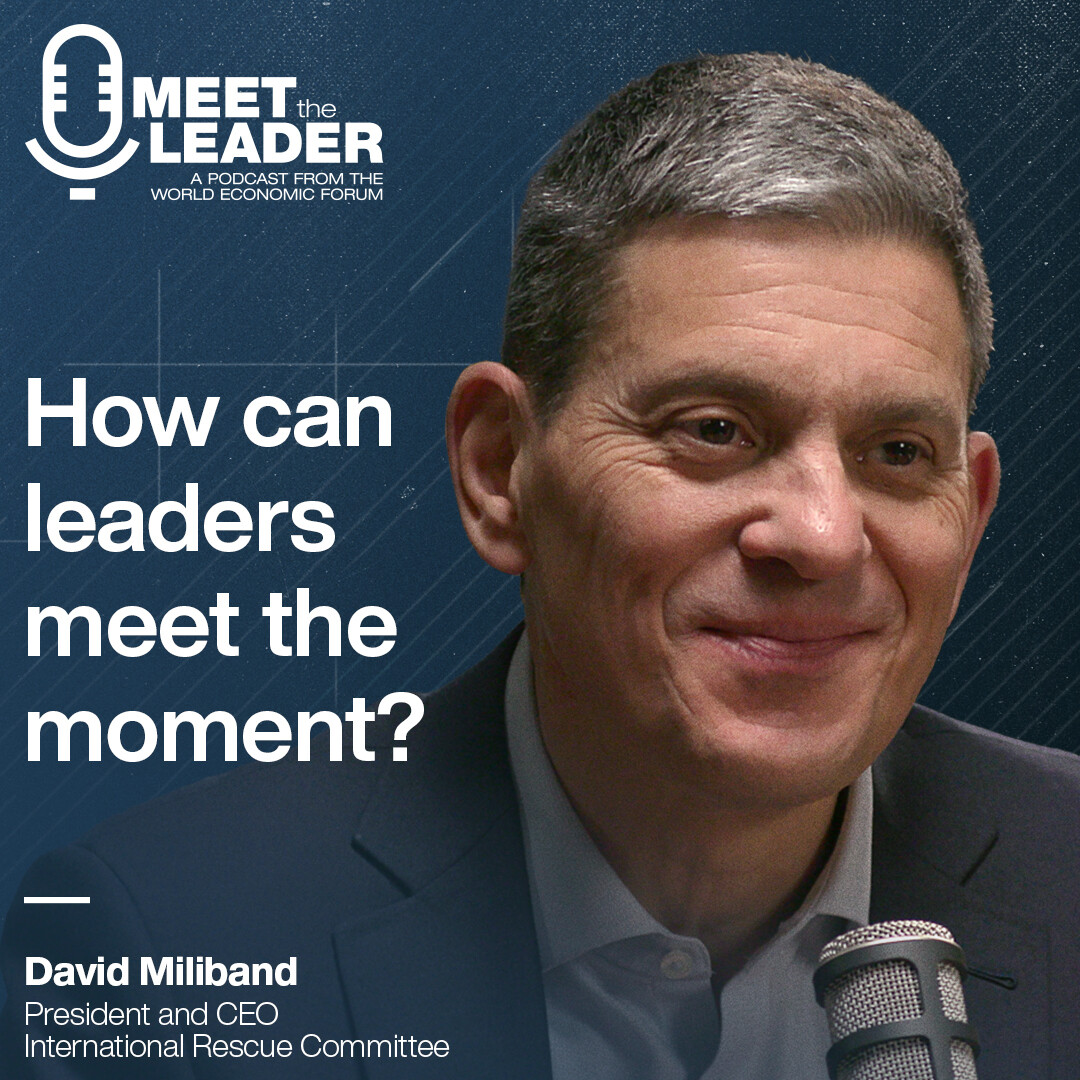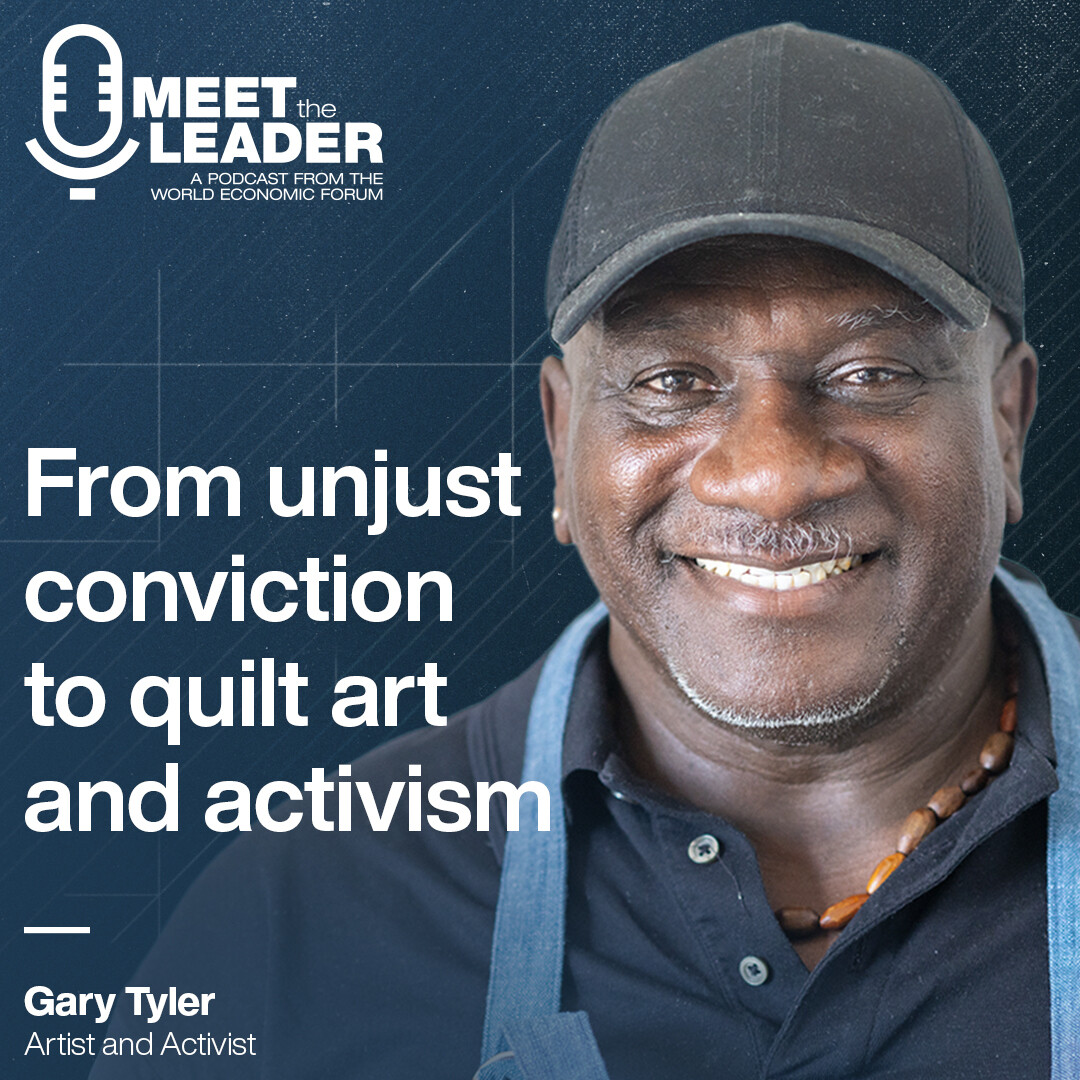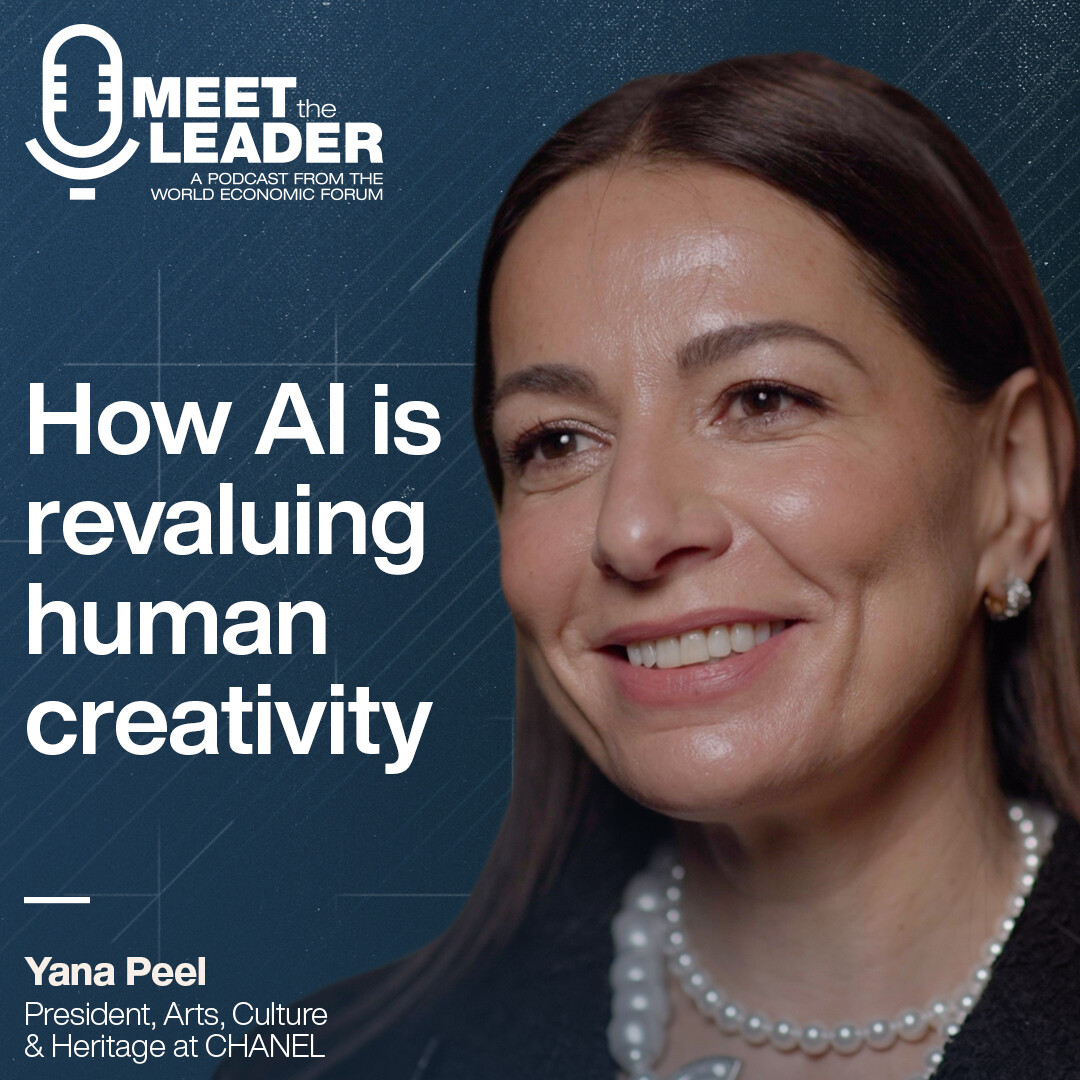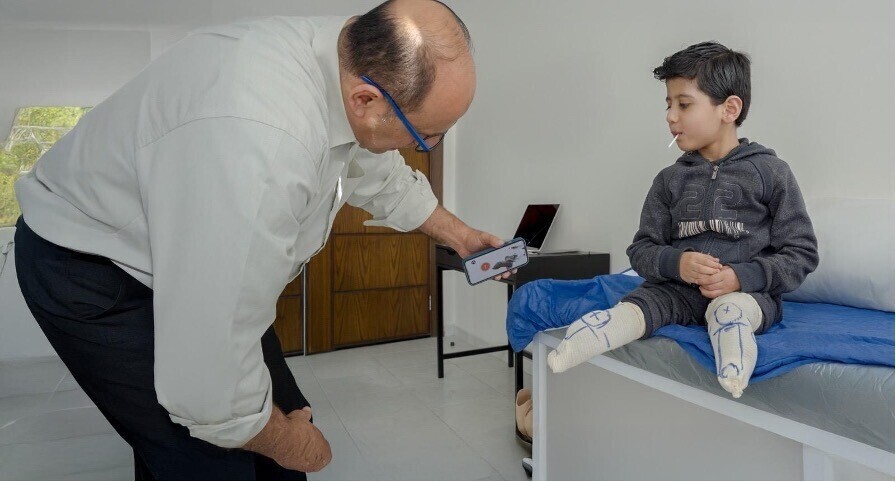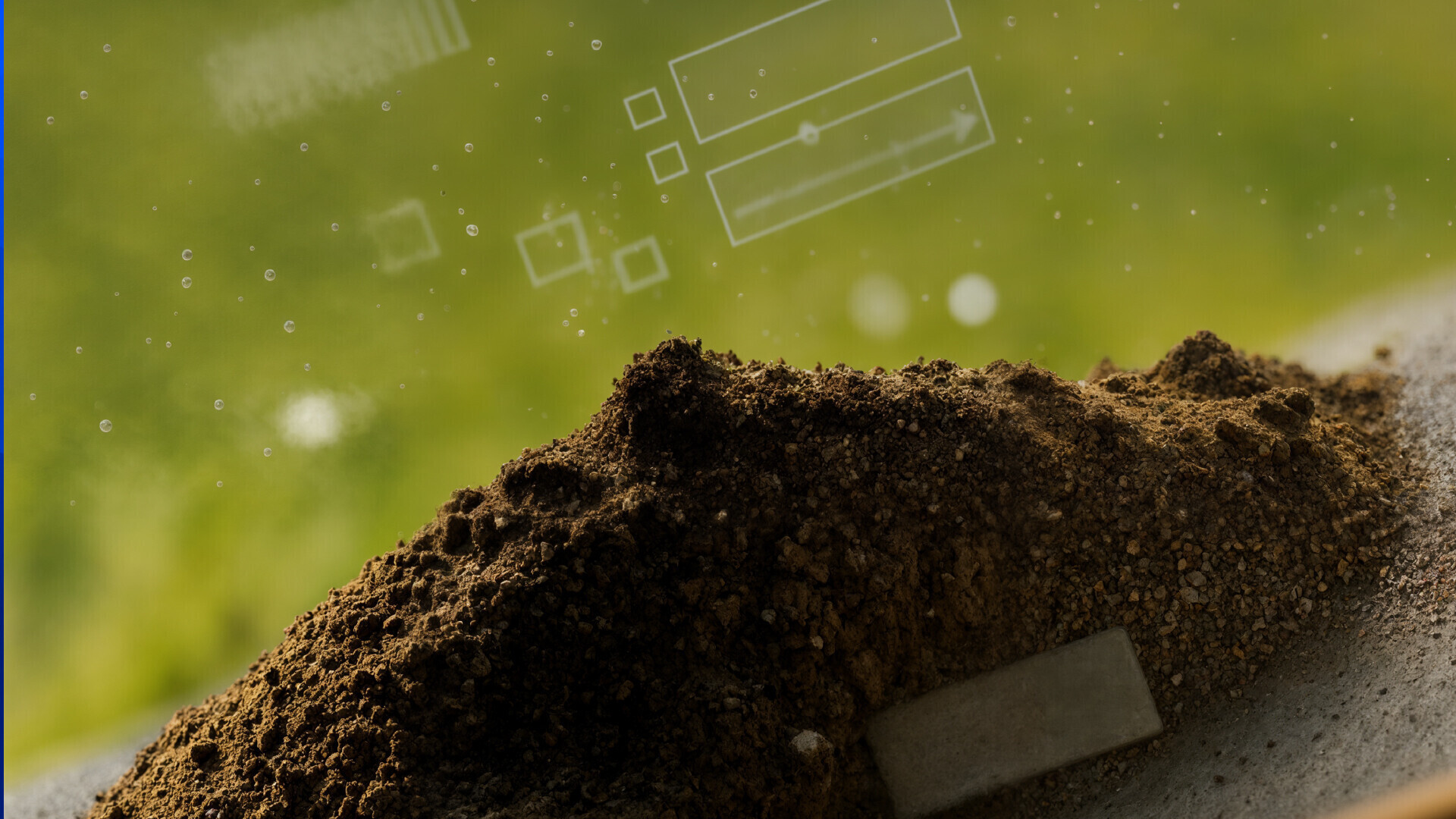He’s building 'gas stations' in space. How it can drive the space economy
ポッドキャスト・トランスクリプト
Linda Lacina, Meet The Leader Welcome to Meet the Leader, the podcast where top leaders share how they're tackling the world's toughest challenges. In today's episode, we talk to Daniel Faber. He's the CEO of Orbit Fab, and that is a company building gas stations in space. He'll explain how this can save lives, boost research, and even supercharge the space economy. Subscribe to Meet the Leader on Apple, Spotify, and wherever you get your favorite podcasts. And don't forget, rate and review us. I'm Linda Lacina from the World Economic Forum, and this is Meet the leader.
Daniel Faber, Orbit Fab Of the millions of pieces of small debris. That's a concern. Pieces as small as like a chip of paint, when they were flying the space shuttle, the return to the Earth ones with a big gouge in the windscreen. And that was caused by a fleck of paint. So even the smallest bits of debris can be a real problem.
Linda Lacina, Meet The Leader Space is a bit of a junkyard, that's not me saying that, that is NASA. Low Earth orbit, the region that is closest to Earth, is a mess with millions of pieces of debris that fly at around 18,000 miles per hour. That is a speed where even a fleck of paint can pose big risk to spacecraft that has effects on everything from research, astronaut, safety, and even our own connectivity back home. Gas stations in space can be a surprising help for this. Satellites, you may or may not know, are single use, and they carry their own fuel. When that's used up, ideally, they fall out of orbit and actually burn themselves up in the fall. But that's not always the case. And old satellites make up some of the 170 million pieces of space junk. Daniel Faber will talk to us all about this. He is the CEO of Orbit Fab, and he knows that satellites that can refuel in orbit will lead to smaller, lighter satellites with a longer shelf life. He talked with me at the Global Technology Retreat in San Francisco this June all about the solution and the space economy. Daniel is also a serial founder. He talked to me about the hurdles that he has faced in building this startup and the key rule he applies to build trust in this new market with everyone from staff to investors. He'll get into all of that, but first he'll talk more about space debris.
Daniel Faber, Orbit Fab People have been launching things to space for the last almost 70 years now and when things go into space if they're really low near the atmosphere they might slowly degrade in their orbit and re-enter. If we push them out of the orbit of the earth then they'll go into orbit around the sun. But most of that material just actually stays in orbit around the Earth. And it doesn't go anywhere, even over decades or hundreds of years. And it's uncontrollable. It doesn't have a way to move around. We often lose radio contact with it. And so it's debris. We've even had some of the rockets, when they went up full of fuel, they blew up, especially in the early days. And that creates a cloud of smaller pieces. All of that is debris in orbit. That's what space debris is. It's things floating around uncontrolled in orbit,
Linda Lacina, Meet The Leader And what are two or three things that are helping to further contribute to this issue?
Daniel Faber, Orbit Fab So there's a lot more satellites getting launched now. And that means that there are more satellites just statistically that end up failing and being stuck in orbit. That's been an issue. But actually the biggest current source of space debris was some anti-satellite tests that have been done by -- America has done some, China, Russia, India. Most of the space debris comes from some of those tests that were done in orbits where the debris takes a long time to return to the Earth. So responsible actors have done them very low in the top of the atmosphere, but other tests were done in places where that debris will stay up there for a very long time. So there are hundreds of thousands of pieces of debris now, and probably half of it, at least, comes from those anti-satellite tests.
Linda Lacina, Meet The Leader Are there statistics on space debris that might shock people?
Daniel Faber, Orbit Fab I think the number of pieces. It's hundreds of thousands of pieces that we can track. And the radars and the cameras that we have looking at space, we can track things down to about the size of a soup can, right, a 10-centimeter size. Below that, we don't really have good tracking data. And the smaller the pieces are, the more of them there are. So we actually don't know. But pieces as small as like a chip of paint, when they were flying the space shuttle, the return to the Earth ones with a big gouge in the windscreen. And that was caused by a fleck of paint. So even the smallest bits of debris can be a real problem. And the fact that we don't know about the millions of pieces of small debris, that's a concern.
Linda Lacina, Meet The Leader What maybe has even surprised someone like you who's closer to this issue about this? Is there anything that's kind of stuck out to you?
Daniel Faber, Orbit Fab I remember when I got started in my career, back in sort of the turn of the century, there was a satellite that got hit by a piece of debris, and that was a bit of a wake-up call. And that satellite had a boom sticking off that would stabilize it with the gravity, and all of a sudden there were two pieces flying in opposite directions. Since then, there have been a number of other just accidental hits that satellites have taken, and, that's, of course, created then more pieces of debris. Space is very, very big. You can hide 100,000 pieces of debris. They're hard to track, but that's still enough that things in orbit are getting hit.
Linda Lacina, Meet The Leader There's also an impact with space refueling. Can you explain that? How does that factor in?
Daniel Faber, Orbit Fab Yeah, absolutely. So my company, Orbit Fab, our tagline is gas stations in space. We refuel satellites in orbit. So this is very near and dear to my heart. If you want to remove space debris that's uncontrolled, you can't send a signal to it because it's gone dark. You have to go and collect it. And you can't run a garbage truck in space if you can refuel it. You end up collecting one or two pieces of debris, and then you have to throw away the garbage truck or otherwise it will become debris itself. So having refueling lets us do active debris removal to take away some of the biggest objects, objects that have like fuel tanks that are still pressurized that are a real issue if they fail.
These kind of objects, if we remove them from orbit, you can take away a lot of the risk. And then statistically, there's much less chance that we'll have failures and worse that we'd have cascade failures where one piece of debris hits another piece which creates a lot debris which then hits some more pieces. So removing the highest risk objects in orbit would be a huge advantage. But you can't do it without a tow truck and you can have the tow trucks without fuel.
Linda Lacina, Meet The Leader What else is helpful for people to understand about Orbit Fab and how it works with refueling? People who aren't familiar with this.
Daniel Faber, Orbit Fab When we started the company, there was no way to refuel satellites in orbit. The International Space Station is the only exception because we docked to that with people in the capsule and we used those capsules to deliver some fuel. But all of the satellites were designed never to be refueled. So we'd launch them and assume they couldn't be touched. The valves on them, they make sure they're tight so they're not gonna leak and then they'd weld them shut almost, like they'd lock them down with wire, they'd cover them in insulation and it means it was prohibitively expensive. And NASA spent a billion and a half dollars trying to invent a robot that could go and do surgery in space on a satellite to inject fuel.
We took a very different approach. We developed a gas cap that could be used to fill a satellite before you launch it, which they need, but then could also be used the fill the satellite on orbit. And so that's now been approved by the US government. We sold a bunch of them. That's starting to become the de facto standard, which means we can now deliver fuel to any satellite that's got that gas cap. So that looks like the future now is get that across the industry, make it an open standard so anybody can use it, and then you can extend the life of the assets. You can have more flexible things like tow trucks. It just increases what you're able to do in orbit in a way that's never been possible before.
Linda Lacina, Meet The Leader Help us understand the direction of travel now for change. What will happen in the next five years and then maybe 10 or 20 to sort of be kind of moving forward to tackling this problem altogether.
Daniel Faber, Orbit Fab In the past 5 or 10 years, people have recognized this as a problem. They've recognized the risk of cascade failure is real. The result of a cascade failure is that a lot of satellites in a similar orbit will get affected by debris and be hit and start to break up or fail themselves. And a whole section, like a whole altitude of orbit, might become unusable. That's the risk.
So in my pessimistic threat forecasting, I can see whole bands of orbit that are not accessible anymore. Thankfully, space is big and there's likely to be bands that we'll still be able to use. But the ones that we're using right now, we're using because they're the most useful. And losing access to those would be a serious impediment to what we do. It's amazing how much on Earth we rely on. GPS is not just driving Ubers around and guiding them around. It's guiding mine trucks. It's guided almost everything. And the timing signal from GPS is coordinating financial transactions. If GPS went away, most of the banks would stop working. People don't realize that. And then most of communications is now starting to go through satellites. If you're outside of a city, your cell phone, you may not realize, but it defaults now to starting to use satellites for communication. And that's increasing.
So we're seeing more and more reliance on the assets that are in space sort of hidden behind things that we use every day. And yet this risk that we'd lose some of these most accessible orbits, it's terrifying. So that realization has come about in the last 10 years or so. People have started putting in place guidelines, and so there's a requirement that you have to get things out of orbit after they've done their mission. You can't just leave them there. And we used to assume space is so big, we'll leave them there.
Space is not so big anymore. So that brings us to today where most actors are being responsible with the use of space and short of a conflict breaking out in space, the right steps are being taken to at least slow down the proliferation of space debris. But we do need to actively remove some of that debris. We need to come up with better ways to manage effectively a space traffic control, like air traffic control. So those things are being introduced in the next five years. Where we're actively planning like if two satellites are coming together, which one dodges? Do you both go left? What does left mean in space?
If two satellites are coming together, which one dodges? Do you both go left? What does left mean in space?
”We've got to have some level of planning. That's coming about. There's a lot more cameras monitoring what's going on so everybody knows where the debris is. And we're starting to see smaller and smaller pieces. So we should be able to see things instead of soup-can sized, we should be able to see things that are now down to a centimeter. Those kind of improvements will really help to reduce the risk.
But everything's then got to be coordinated. That everything has to move. And so having fuel available means satellites can move and stay out of the way. We can plan into the future because we know the trajectories. That's all really important.
But the flip side of that is space is becoming much more useful and much more accessible as launch costs drop. So we're also seeing a lot more activity. And so there's a lot satellites, but each satellite is safer because the way that we operate it. What's the aggregate effect on this? We have to monitor it carefully. That's why we have to keep evolving these practices. So active international debate about what it means to have sustainability in orbit, where the main thing that people are looking at is the orbital debris regime and how to control that. Many things need to come into that.
One of the encouraging things we see, we're working on the refueling. When we started, there were six or seven companies working on tow trucks, right, to move satellites to different orbits, but also to grab the debris and get rid of it. Right now, this is like six years later. There's over 300 companies working on different business models for servicing and tow trucks and the like in orbit. There are people looking at doing assembly and all these types of things. So the economic activity in orbit is diversifying dramatically. We're starting to see manufacturing happening in orbit, we're seeing commercial space stations coming online in the next few years that will open up more space tourism. These are kind of markets that haven't existed before. So it's really interesting what's happened at Dependence, their economic activity space is expanding. And we've got to keep an eye on that risk of space debris. It's a real thing.
We're starting to see manufacturing happening in orbit, we're seeing commercial space stations coming online in the next few years that will open up more space tourism. These are kind of markets that haven't existed before.
”Linda Lacina, Meet The Leader There's still a debate that surrounds space refueling. Can you talk a little bit about the folks that feel like maybe, yes, maybe there are some advantages of on-orbit refuel, but maybe there's also some disadvantages, so maybe we don't need to speed up our efforts on this. Can you tell us a little about this debate?
Daniel Faber, Orbit Fab Let me contextualize that by the reasons we started Orbit Fab. Firstly, and I decided that when I was in university that the most significant thing that we could do for humanity and life is to take it off of Earth. It's about as significant as when life crawled out of the ocean. So that's why I'm working on it. I wrote down a list of industries I thought could pay for the first permanent jobs in space and working towards those kinds of things. And fundamental to that is you need enough economic activity in orbit. You need to find the businesses that will pay and then it's sufficient to have humans there to handle the complexity of what's going on. So that's sort of been my basis for all of this.
I wrote down a list of industries I thought could pay for the first permanent jobs in space and working towards those kinds of things. And fundamental to that is you need enough economic activity in orbit. You need to find the businesses that will pay and then it's sufficient to have humans there to handle the complexity of what's going on.
”And this is now my fourth startup company. When we sold the third one, I started asking friends, how do we make the satellites reusable? Because they were all disposable, they're all single use. SpaceX had shown you could make rockets reusable, which a lot of people didn't believe was possible. But that's created an enormous amount of value. The launch cost to get to orbit have dropped. It's a huge impact. So I was asking friends, just what is it worth if I could get you fuel in orbit? And I was absolutely shocked. The answer was a million dollars of extra revenue for every kilogram of fuel. I'd never heard of anything like that. I can buy that fuel for $300 a kilogram, and it creates a million dollars per kilogram of value if I deliver it in orbit. If you're designing a satellite normally, you have to choose how much fuel you're going to put in. You optimize it. And if you put in more fuel, you have to buy it, you to launch it, which is quite expensive. And then you have to cover the cost of capital all the way through to that marginal kilogram. So that last kilograms ended up costing you quite a lot. But also, to get that last kilogram there at the end of five years, 10 years, 15 years, you've had to tow it around. If you imagine buying a car with 10 years worth of fuel, you've got trailers of fuel behind you that you're dragging, and most of the fuel gets you dragging the fuel. That's the conundrum.
And so, even though it's a million dollars per kilogram of marginal revenue, it's not worth putting any more upfront. But if we can do the logistics and deliver it just in time at the end, we create a huge amount of value. And so that was the reason that we started looking at refueling in orbit. And so from an economics perspective, just from extending life of these assets, it makes a lot of sense. But we realized very quickly the main value we're bringing is to enable business models that weren't possible before. So tow trucks is the primary example, but I describe them as tow trucks. The servicing vehicles can, they can, like, attach and become a jet pack and do an extended life. They can tow a satellite to a new orbit. They can help satellites get to orbits after they deploy. They can inspect satellites. You know, we've never had inspection in orbit. If you apply for an insurance payout, the insurance company has to believe you because they can't go and do a assessment. Because to have a satellite fly around another satellite and then go to another, it would use too much fuel. And so that kind of thing becomes enabled. You could start doing assembly, you could do replacement of payloads, you can do upgrades. We've never been able to do that. You can repair a solar ray or replace a solar if it doesn't quite deploy. You may just need to shake it, but right now we can't shake it. We can't poke that thing that got stuck. There's no reset button, right? That starts to become possible.
So you change the whole paradigm in space from one of your, we're going to launch it. We really hope it's going to work, but if it does work, it reaches the end of a life? It's gone. If the market shifts, I wish I had somewhere else, i don't have enough fuel for that. And I've sunk all of that capital expenditure in up front so it's an incredibly capital-intensive industry. If you switch that to an upgradable platform, then all I've got to do is put my payload on there. That's a lot cheaper than building a satellite. And so there are companies that will rent out slots on satellites now, but they rent them out and you've got a launcher from the ground and that's it. It's not getting changed. Very soon, we'll have people changing out those payloads. That's huge economic event. And so those are some of the things that are coming. All of this gets built on having fuel. None of this exists without fuel. And ultimately, our goal is to build not just a fuel supply chain, but an industrial chemical supply chain. We want to be able to provide air, water, 3D printer feedstock, fuel, lubricants, but any industrial chemicals for manufacturing in space, anything like that. Ultimately, we want to build refineries in orbit so we can take material from the moon and asteroids and put that into the supply chain. And then we reduce the reliance on launch. We can do a lot more in space because there's a huge amount of material in those celestial bodies that we don't have to launch from the Earth. And that's going to be a huge bonus. So that's our 20 or 30-year vision is to create that industrial chemical supply chain all the way from chemical processing through to storage and delivery.
Ultimately, we want to build refineries in orbit so we can take material from the moon and asteroids and put that into the supply chain.
”Linda Lacina, Meet The Leader I'm sure there's many times where you've hit walls, things that have been unexpected, you're gonna pivot and change. What's one that's been very shaping to you in running Orbit Fab?
Daniel Faber, Orbit Fab So this is my fourth startup company, and I've made a lot of mistakes, I've learned a lot of lessons. The ones that I think have been the most important at Orbit Fab were a lot around just building the right team, getting the right culture, getting right investors on board, getting people involved. Some of the things that were tailwinds were the market. The US government has realized that for the things they do, they really need fuel. And they're prepared to help out with the financing of all the technology development and those types of things. So right now we're on contract to deliver fuel for the US government next year. Without those types contracts, without getting lucky on that demand timing, we would have struggled to build this business, especially to share the story with investors as to why now is the time that it is about to take off. Our commercial customers are very keen to see it happen. They've told us to quote, we will come and beat your door down, but you have to test it in orbit first. And so that's the threshold that we are working towards. Closing that business model has always been tough. This is a 40 or 50-year old idea. But the reason that now is the right time is because the government's been prepared to invest in it. And not just a US government, also the European governments. We have a big UK presence as well. That's been super useful. Market timing is really key.
Linda Lacina, Meet The Leader As a serial entrepreneur, is there a trait that you really depend on that you wouldn't be able to work without? Maybe even a question that you would keep asking yourself. What's something you depend on?
Daniel Faber, Orbit Fab There's a number of things, and you can read a lot of books. The one that I read a lot that I probably agree with, you get a lot a nos. You get a lotta people who don't believe what you're doing, that don't think the world is ready for this next paradigm, that are happy with the previous paradigm. And you have to have very thick skin. You have to be able to get up again after you've been knocked down and just keep going, even when you're not sure exactly where the next check is gonna come to keep the company alive. Or how you're going to close the deal or whatever it is. You just have to be relentlessly optimistic whilst also being relentlessly realistic about where you need to focus the business. You've got to hold several potentially contradictory ideas in your mind at the same time and just keep going.
Linda Lacina, Meet The Leader Was there a no, the last no or a barrier that came in Orbit Fab? Maybe one that you felt like, oh God, we might actually have hit something that I don't know how we're gonna get through this one. Is there one like that?
Daniel Faber, Orbit Fab I've heard it said that every startup company has to almost die at least three times, right? And die is defined quite simply as run out of cash because there's three rules for a startup. First rule is don't run out cash. The second rule is, don't ran out of cash. The third rule is irrelevant. So have we almost ran out cash? Yeah, about four times. We've been very transparent with our team which scared me a lot. I didn't know how the team would react. And it's been very reassuring, people have stuck with it. We believe in what we're doing, we believe in changing the industry like this. In fact, I had one engineer said, I'll be here to turn the lights off if I have to. People have stuck with because they believe in it. And because of that, we've been able to get through and then the team has stayed together and they rightly feel an incredible sense of accomplishment. We've now built the de facto standard interface for refueling satellites in orbit. The world will never be the same. Even if all but fab went away tomorrow. This technology is going to be accepted. That paradigm has shifted. Now it's just a matter of what can we build on top of that. But no, we almost died four times. We had investors come and save us. We've had customers, deals that have come through just in time. And sometimes we've been very transparent with those outside the company. We've always been very transparent with those inside the company and that's paid dividend.
Linda Lacina, Meet The Leader In the last five years, how would you say you have changed as a leader? Is there something that you do now that would not have occurred to you maybe five years ago?
Daniel Faber, Orbit Fab I'm definitely a lot more organized in how I look at investment rounds and how I prepare for that. Because this is startup number four, I'd already learned that I needed to have a large enough market. I needed co-founders that were aligned. I needed investors that were in line and those types of things. So I'd taken a lot of lessons from that. I think this transparency is probably the big one. That was a risk that I took early on. And I said, I'm just going to tell people inside the company everything that's happening. I don't want to have to hold secrets or hide behind anything. And I hope that people will stick with me. And others were saying, look, those that do are the ones that are worth having around. And so that's succeeded. That's been a really valuable lesson.
Linda Lacina, Meet The Leader There's always disruptions, there's always uncertainty, but there was COVID, there was supply chain things, there's massive impacts that we're still feeling from some of this stuff. Do you believe that maybe the nature of some of the disruptions and their scope made it easier for people to be like, okay, we're all in this together? Does the pace of change make it easier for people embrace uncertainty?
Daniel Faber, Orbit Fab I think in some respects it does. It depends on the personality. Some people that makes them more worried and they'll look for less risky opportunities in career, in life, et cetera. Other people learn to accept that. And I think I've seen that. When people have been through a tough time, a tough patch, they're typically able to handle the next one a lot better. And so in that way, adversity breeds resilience. I think that's been the dominant things. So yeah, there's been a lot of uncertainty in the last few years. There's been lot of uncertainly in the company. But the people that we've stuck with are incredibly resilient now more so than they were at the start.
Linda Lacina, Meet The Leader That was Daniel Faber, thanks so much to him, and thanks so much to you for listening. To learn more about how the space economy is growing, check out our report Space: The $1.8 trillion opportunity for global economic growth. We'll make sure to have a link in our show notes. And to listen to more podcasts, including my colleague's podcast radio Davos, go to wef.ch/podcasts. This episode of Meet the Leader was produced and presented by me, with Jere Johansson and Taz Kelleher as editor, Everett Bally as studio engineer in San Francisco, and Gareth Nolan driving studio production. That's it for now. I'm Linda Lacina from the World Economic Forum. Have a great day.
Space has become a junkyard, a mess of millions of pieces of debris that pose big risks to spacecrafts, complicating astronaut safety, research and even our own connectivity back home. Daniel Faber is the CEO of Orbit Fab, a company whose technology will allow for satellites to refuel once in orbit. He’ll explain why this solution can be critical to tackling space debris while also helping to save lives, boost research and even supercharge the space economy.
トピック:
新興テクノロジーその他のエピソード:
「フォーラム・ストーリー」ニュースレター ウィークリー
世界の課題を読み解くインサイトと分析を、毎週配信。


